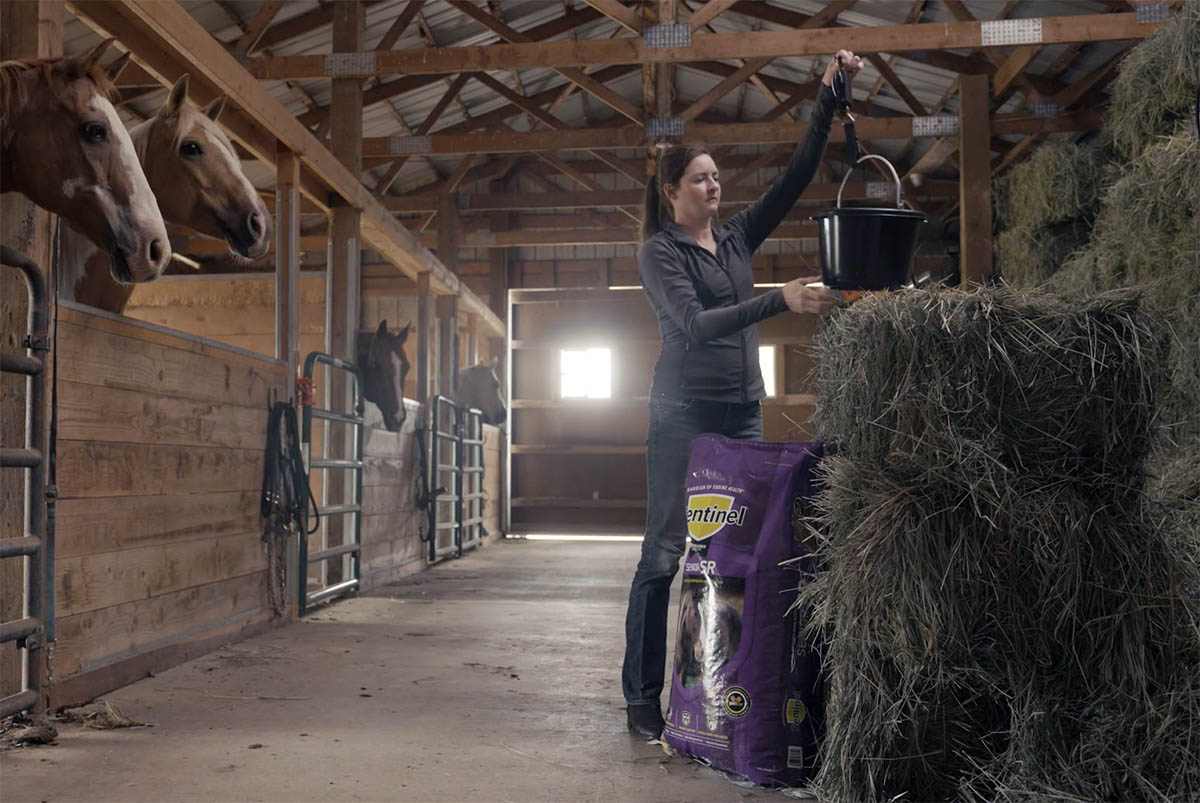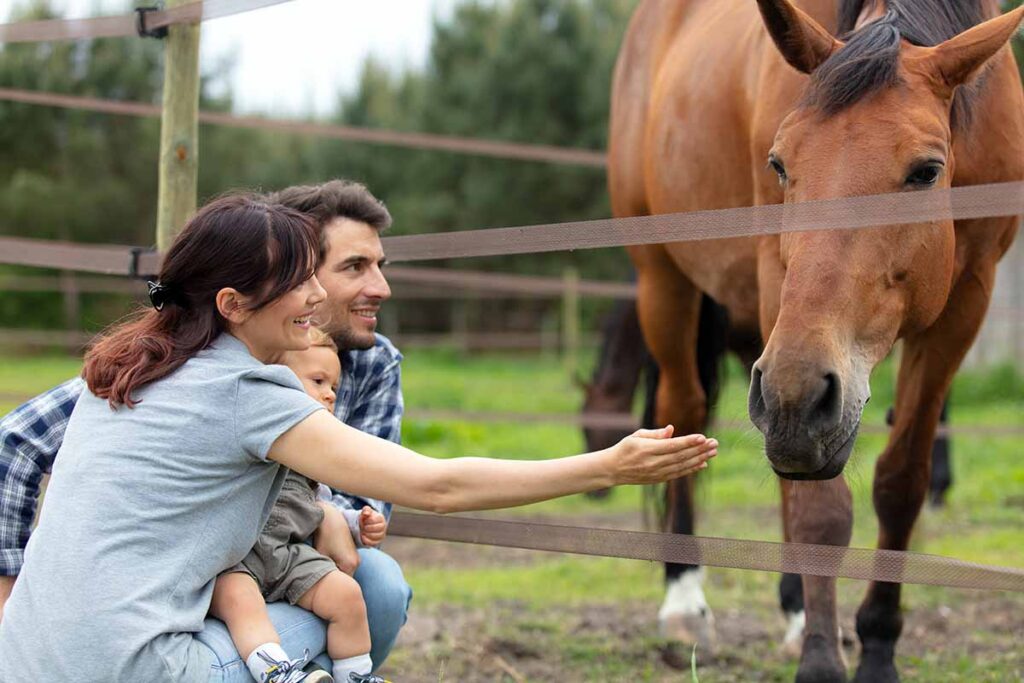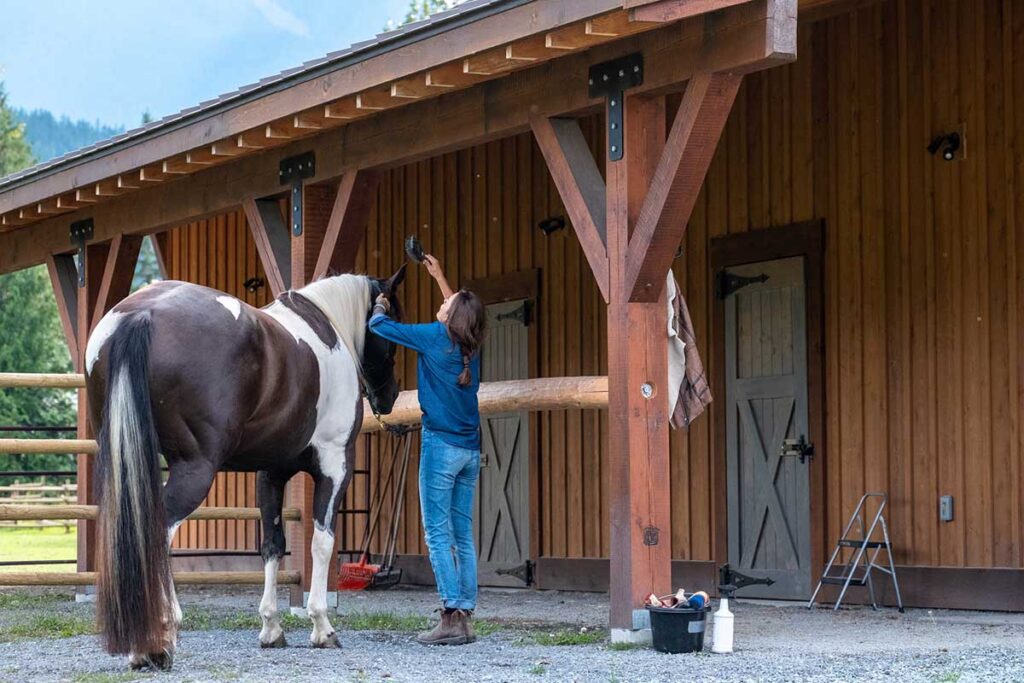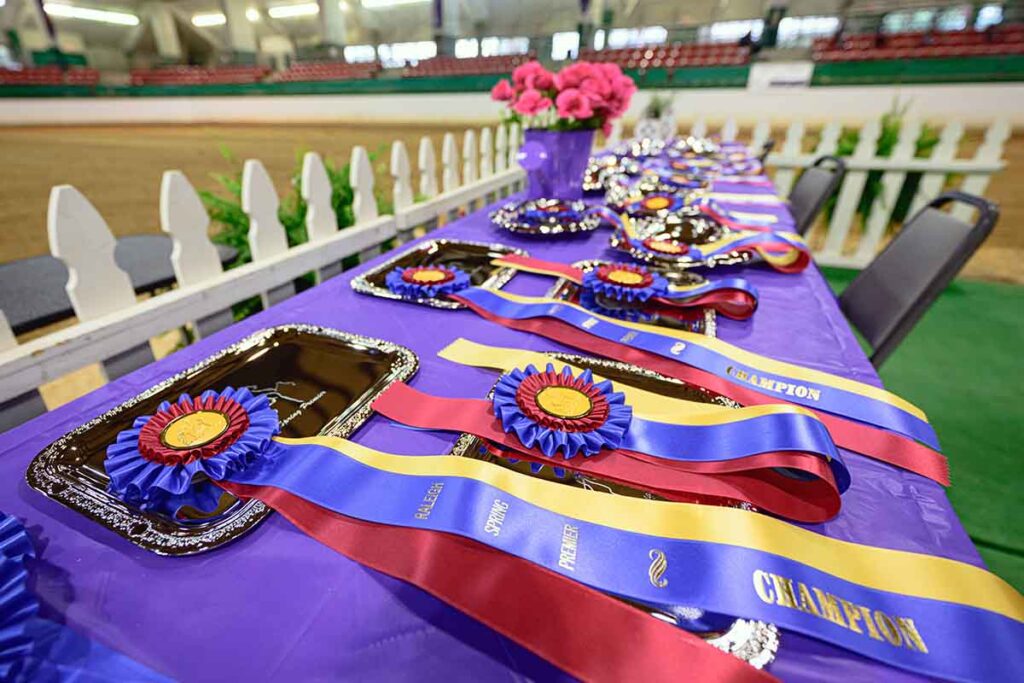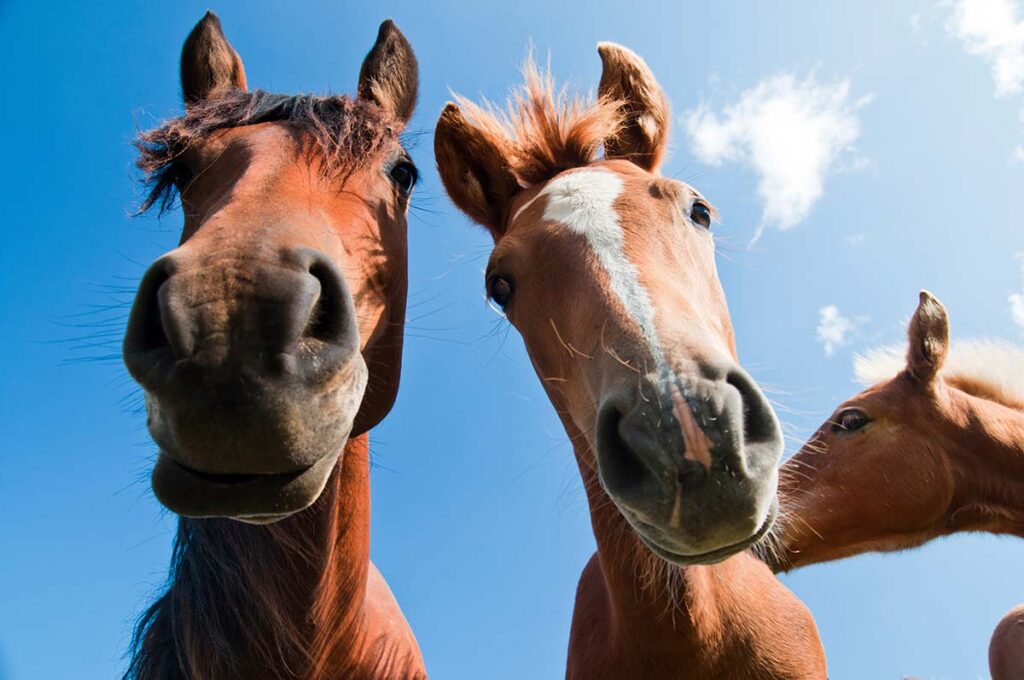When sitting down to discuss equine nutrition with Randy Raub, PhD, Director of Research and Nutrition and member of the Sentinel Nutrition Team, it’s clear he knows the practical side of feeding horses. In many barns, feeding programs depend on horse numbers, life stages, and activity levels, which can vary greatly. According to Randy, the foundation of a quality equine nutrition program is often overlooked, and he shared ways to improve your feeding program so your horses can reach peak performance.
How To Plan Your Feeding Program
Horses are natural grazers and need access to food frequently throughout the day. So, base your feeding program on your available hay and forage, Raub says.
“You need to understand the quality and approximate nutritional value your hay and pasture are providing, how much pasture and/or hay your horse is consuming in a day, and then how much work the horse will do,” he says. “Then, you can add in a concentrate feed or supplement to provide your horse the nutrients needed to perform.”
Keep in mind — small meals throughout the day are key to your horse’s health and well-being,” he adds.
Start With Your Hay
“In any feeding program — no matter where you are — it should always, always start with addressing your hay,” says Raub.
He explains that there are many different types of hay depending on location, such as alfalfa, timothy, orchardgrass, coastal Bermuda, and more. These different types of hay each carry different nutritional values.
“Also, the feed quality of a specific hay can vary greatly depending on soil quality and forage maturity when harvested,” he says. “For example, grass hay out of Ohio may not have the same nutritional value as grass hay from Colorado. Along with the soil and forage maturity, hay storage is also a key factor. Is the hay sitting in a barn covered or exposed to the elements? Storage plays an important part in how hay holds its nutritional value and, thus, determining other needed feeds/supplements.”
How To Evaluate Hay Quality
Start by visually appraising your hay. “Look at the stem-to-leaf ratio (the more leaves the better), bright green color, a fresh aroma, and an absence of dust, mold, and foreign material,” Raub says. “Just know, visual appraisal is not always as accurate as you think. Your horse may not look or perform up to your expectations, indicating your horse is not receiving the essential nutrients he needs. So, a professional analysis of your hay is helpful to develop the appropriate feeding program.”
Now that you know how to judge your hay, how do you figure out its nutritional value?
“Equine nutritionists often say, ‘Did you get your hay evaluated?’ In other words, when you are buying enough hay for a year or longer — it’s recommended that you get the hay tested for its nutritional value, which takes the guessing game out of it,” says Raub. “You know the essential nutrients the hay is supplying your horse. If you are buying your hay a month or two at a time, you’d be testing it every time you picked up a load, which is not as practical! And in some cases, particularly during droughts, you are just happy to be able to buy some hay regardless of its nutritional value.”
Getting your hay tested helps you evaluate how you should be feeding your horse and if you need to supplement with a concentrate or other feed type. “Most folks blame a drop in their horse’s weight or change in body condition on the feed,” Raub says. “When it is really the quality of hay, forage, or pasture that has changed. The hay analysis will give you a starting point of where to go nutritionally to keep your horse performing.”
He then offered these tips on how to take samples for hay analysis:
- Using a hay corer/probe, collect samples from 10-20% of the bales in a single load. Combine the samples and thoroughly mix them together. Grab two separate samples from the mixed samples, place each in a separate labeled (hay source, type, cutting, date bailed, and date sampled) plastic bag, and ship both samples off for analysis.
- Don’t sample just one bale but take random samples from throughout the load.
- Don’t have your own hay probe? You can work with your local feed store to hook you up with a nutritionist to come out and sample your hay for you. Or contact your local extension specialist office, which might have a hay probe you can borrow.
“Then you will have an accurate analysis of your hay’s nutritional value, an idea of how much hay to feed, and if additional concentrate is needed,” he adds.
How To Get an Accurate Feed Measurement

When measuring how much grain or feed your horse should get, it’s important to understand that a scoop is not just a scoop. “You need to feed your horse the correct amount of grain or concentrate to match his workload,” says Raub. “Not just the amount of concentrate, but the correct weight. And a sweet feed compared to a pellet form compared to an extruded feed all weigh different amounts and have different volume levels when in a scoop.”
He recommends investing in a small postal scale or a hanging scale (such as for luggage or fish), putting the scoop in a baggie or plastic netting, and measuring it that way. “Take the time to make that feed measurement on your scoop and mark it with a line. It can mean so much to your horse’s nutritional needs and management, especially when you have to explain that to your vet or equine nutritionist.”
How To Evaluate the Percentage Numbers on a Bag of Feed
There are usually three percentages you see on the bag: protein, fat, and fiber. Protein fuels horses with calories when they are at work and helps them grow and develop.
“The best source of pure protein for your horse is alfalfa,” says Raub. “For example, if you have a performance horse and you are feeding good, straight alfalfa, you don’t need to feed a concentrate with more than 12% protein. Then you have fat, which is pure calories and fat. For a working horse, I’d say you want nothing less than 8-10% fat. You have to have calories to work! Then, fiber is probably the most misleading information on the tag. It depends on the fiber source. Good ones are soy hulls and beet pulp (these have two times the energy value of a good-quality grass hay). A less ideal fiber source for a horse working hard is ground timothy, which can be found in textured feed. It’s not bad, but it’s essentially ground-up hay.”
He notes that if you have a senior horse, he’ll need a relatively low-digestible fiber, such as rice hulls, in his feed to keep weight on. “They provide an important component to a senior horse that can no longer eat hay, as many don’t have a lot of teeth left,” Raub explains. “Senior feeds are trying to emulate a forage-type base, thus allowing senior horses to thrive. It’s the single best thing that’s extended the life of mature horses.”
Other additives you should look for in a concentrate include lysine at 0.7% and methionine with at least 0.4%. “A lot of people worry about too many carbohydrates for the performance horse,” says Raub. “Our Sentinel line fits these horses perfectly, as well as a wide range of other horses at different life stages, and our team of nutritionists formulated our products to meet horses’ specific dietary needs.”
This article is brought to you by Sentinel Horse Feed.

